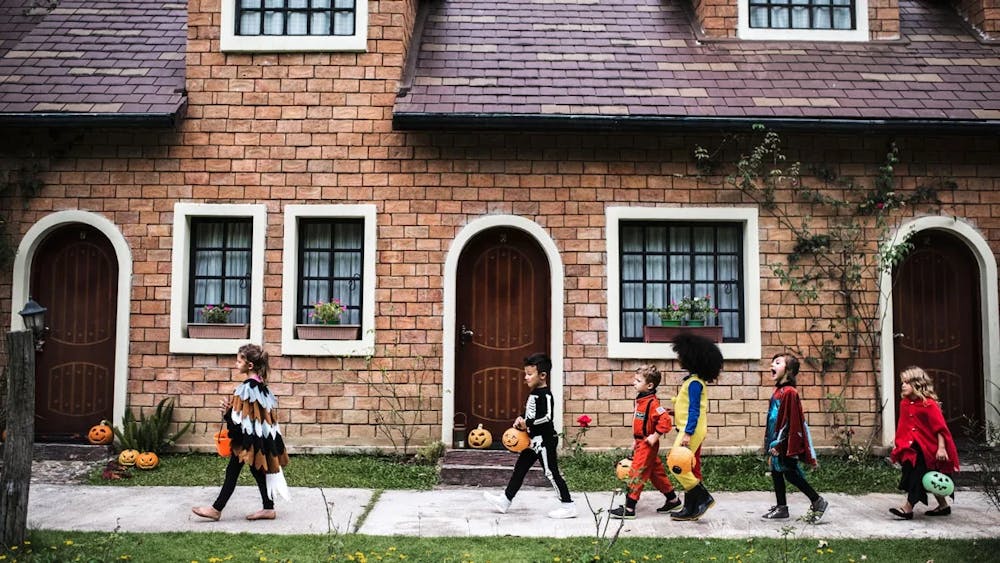Not too long ago, princesses and pirates and ghosts and goblins roamed the streets citywide to celebrate the final night of the month. As soon as the sun vanished, countless scary witches and clowns (at least as scary as being 4-foot-5 allows) hopped from house to house, and, as they grew older, from neighborhood to neighborhood.
They’d ring doorbells nonstop until their little orange pumpkin bags were filled to the brim with the cavity-causing goodness that filled their little hearts with glee. Inflatable dinosaurs and little ghosts would run across the street at the sight of their classmates they’d last seen at the class Halloween pizza party earlier that day.
But now, as I look outside on All Hallow’s Eve in Northeast Philadelphia, all I see are tumbleweeds with the rare sight of a little kid and their parent on a quest for candy.
Halloween has always been a night to remember for little ones- it’s unlimited free candy for the biggest candy connoisseurs to exist! Children plan their costumes months in advance, either making them from scratch or endlessly browsing through store catalogs, in order to fill their buckets with as many treats as possible.
But why is it that now, year after year as Octobers come and go, fewer kids approach my door with the iconic phrase “trick or treat?” What caused this shortage in the trick-or-treat economy? What can we blame? What can we fix?
It’s important to note that, like all economic shortages, our current trick-or-treater shortage does not affect all city areas the same. As my neighborhood gets quieter, others continue to thrive. When surveyed about their Halloween experiences these past few years, residents of Society Hill didn’t notice a change in the demeanor of their neighborhood whatsoever; They’re met with endless trick-or-treaters throughout the night, just as eager to grow their collection of chocolate bars as ever.
But why was it that I, trick or treating that very same night at that very same time, was met with utter silence in the streets with not a single soul to accompany mine?
When comparing my quiet northeast neighborhood with that of Society Hill, maybe it’s the sense of community to blame. With smaller gaps between houses and more sidewalk traffic, neighborhoods in Center City are essentially forced into more tight-knit communities. The suburbs and less urban areas of the city, on the other hand, are spread out, contributing to a mild but undeniable sense of isolation.
It may be that this sense of community, or lack thereof, explains the recent shortage of trick-or-treaters. However, there is a possibility that the growing absence of trick-or-treaters is due to the seeming culprit of all our modern-day problems: social media.
Although it may not be uniformly agreed upon or sufficiently scientifically proven, there’s no doubt that social media and its existence have affected the ways in which we socialize. What was once group hangouts playing board games in the basement eventually became video games over Facetime, and weekly girl talks at a sleepover got replaced by daily Facetime calls.
With the rising popularity of social media, children of all ages have been exposed to more mature content than ever before. They’ve also been placed in a society dominated by teenagers and constituted by their rules and norms to be considered “normal.”
It’s not unusual for me to stumble across a social media post of a young child, maybe around the age of 10, with comments ridiculing their choice of style or actions when really, it’s just a kid being a kid.
Enjoy what you're reading?
Signup for our newsletter
Perhaps it's this constant pressure to grow up that made trick-or-treating seem less appealing to younger kids. Perhaps Halloween has just fallen victim to social media’s society-altering toils.
This theory, however, is more unlikely considering that children throughout the city still enjoy the fun of trick or treating, but it’s possible it could have played a factor.
Maybe candy has gotten too expensive for people to willingly give out, or the concern for safety has gotten stronger as parents get more worried. Whatever the case may be, the gradual deterioration of such a kid-favorite of a holiday is truly puzzling.
As the echoes of the words “trick or treat” only grow fainter in my once-lively neighborhood, the contributor behind its untimely demise is yet to be uncovered. As we spend time preparing for this year’s All Hallows Eve events, it may be valuable to ponder, “What happened to Halloween?”




